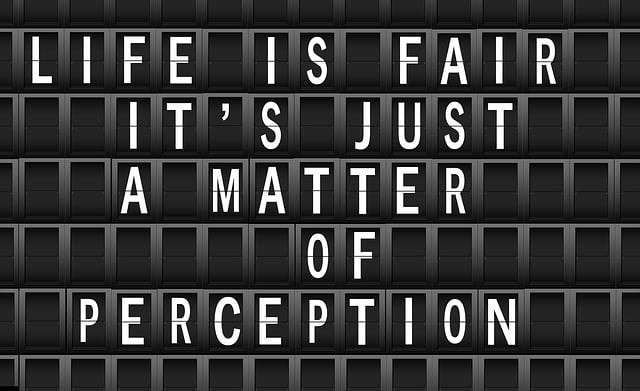Understanding the insights and perspectives of students regarding their educational experiences is crucial. A well-crafted student perception survey can serve as a valid and reliable measure of student engagement, teaching practices, and classroom management. This article will explore the essential steps and considerations in building an effective student perception survey, specifically targeting primary and middle schools, although the principles can be adapted for higher education as well.
Importance of Student Perception Surveys
Student perception surveys are pivotal in gauging the effectiveness of teaching practices and classroom experiences. By soliciting direct feedback from students, educators and school leaders can gain a comprehensive picture of how teaching methods impact student outcomes.
These surveys help in understanding how students perceive their teachers, classmates, and overall learning environment, offering critical insights that are often overlooked by other forms of assessment.

Research consistently shows that student feedback is a cornerstone for improving instructional practices.
For instance, findings from Panorama Education highlight that actionable feedback from students can lead educators to refine their approaches, ultimately fostering a more supportive and effective teaching environment.
Designing Your Survey: Ensuring Validity and Reliability
The first step in crafting a student survey is to ensure that it stands as a reliable measure.
This involves constructing survey items that accurately reflect the student experience without leading or biasing responses. It’s vital to use language that is age-appropriate, especially when surveys are administered to students at the primary school level or in middle school settings.

To ensure that the survey provides a valid reflection of the classroom experience, include both open-ended responses and fixed-choice questions.
Open-ended questions allow students to express their thoughts in their own words, often revealing new insights that structured questions might miss. Meanwhile, fixed-choice questions facilitate easier data analysis and can help in tracking changes over time.
Key Areas to Cover in Student Surveys
- Teaching Practices: Questions should assess how students perceive the clarity of instruction, the relevance of the material, and the engagement strategies used by teachers. It’s also beneficial to gather student perceptions on whether they feel their teachers care about their learning and well-being.
- Classroom Management: This includes how teachers handle classroom behavior, maintain a productive learning environment, and meet the diverse needs of their students. Effective classroom management is directly linked to higher levels of student engagement and learning outcomes.
- Student Engagement: Survey items should explore how students feel about their participation in class discussions, involvement in learning activities, and their overall interest in the coursework.
- Feedback and Support: It’s crucial to understand how students perceive the feedback they receive on their work. Are the expectations clear? Do they feel supported by their teachers in achieving their academic goals?
- Peer and Social Dynamics: Since students spend a significant amount of their day interacting with peers, understanding their social experiences in school can provide valuable context for their overall engagement and satisfaction.
Collecting and Analyzing Survey Results
Once the survey is administered, the next crucial phase is the collection and analysis of data. Schools should ensure that the data collection process upholds student anonymity to encourage honest and open responses.
Analyzing this data can vary significantly depending on the survey instruments used and the specific objectives of the survey. However, common practices include quantitative analysis of fixed-response questions and qualitative analysis of open-ended questions.

School leaders and teachers should interpret the survey results with an eye toward identifying patterns and trends that could inform changes in teaching practice and classroom management strategies. For instance, if a significant number of students indicate that they do not understand the lessons, this might suggest a need for revising instructional practices or providing more comprehensive in-class support.
Implementing Changes Based on Feedback
The ultimate goal of student perception surveys is to use the gathered data to improve educational practices. This requires a commitment from educators to not only collect feedback but to act on it. Implementing changes based on survey results should involve discussions among teachers, administrators, and other stakeholders in the education system.
Schools can use these insights to tailor instructional methods, address student needs more effectively, and enhance the overall educational experience.

By regularly updating the survey questions and administration methods, educators can continue to refine their approaches and ensure that the surveys remain a relevant and valuable tool for school improvement.
In conclusion, building and utilizing a student perception survey can provide educators with invaluable insights into the effectiveness of their teaching methods and the overall school environment.
By carefully designing surveys, diligently analyzing results, and thoughtfully implementing changes, schools can significantly enhance student learning experiences and outcomes.
Myth Busting: Clarifying Common Misconceptions about Student Perception Surveys
Student perception surveys often face skepticism and myths that can undermine their effectiveness and credibility.

Here, we address three common myths, providing factual corrections to enhance understanding and appreciation of these valuable tools.
Myth 1: “Student perceptions are too subjective to be useful in improving instructional practice.”
- Fact: While it’s true that student perceptions are subjective, this is exactly what makes them invaluable. Students’ subjective experiences can provide teachers with insights that more objective measures, like test scores, cannot capture. Understanding how students perceive their classroom experiences and teaching practices allows educators to tailor their instructional practices more effectively. This approach is especially critical since it addresses individual and group needs, making education more responsive and dynamic.
Myth 2: “Teachers interpret feedback from these surveys as personal criticism rather than constructive.”
- Fact: Professional development and clear communication can help teachers interpret survey results as constructive feedback aimed at improving instructional practice. Schools must foster a supportive culture where feedback is seen as a tool for professional growth rather than personal critique. By focusing on the collective goal of enhancing student outcomes and classroom experiences, teacher perceptions of these surveys shift from defensive to proactive, embracing the opportunity to improve.
Myth 3: “Surveys are unnecessary in smaller classes or schools where teachers know all the students well.”
- Fact: Regardless of class size or the personal connection teachers may have with their students, individual perceptions can vary significantly, and some students may feel more comfortable expressing their thoughts anonymously. Surveys provide teachers with a structured format to gather and analyze feedback from all students, ensuring that every voice is heard. Even in small groups or teams, subtle dynamics and student experiences might go unnoticed without the systematic approach provided by a survey.
By integrating these factual corrections into our understanding of student perception surveys, educators, parents, and school leaders can better appreciate and utilize these tools to enhance educational practices.

Each survey item, designed with care and specific intent, serves as a critical question that prompts educators to reflect on and refine their approaches. Whether adjusting efforts for the entire school year or focusing on improvements at a specific grade level, these surveys empower teachers to make informed changes that positively impact students’ learning environments.
Common Mistakes in Conducting Student Perception Surveys
When it comes to gathering and utilizing student feedback through perception surveys, several common pitfalls can undermine the effectiveness and reliability of the results.

Below, we highlight seven typical mistakes, explaining why they occur and how they can be avoided to enhance the overall quality and impact of these surveys.
Mistake 1: Using Overly Complex Language
- Explanation: Surveys filled with complex, technical, or age-inappropriate language can confuse students, leading to unclear answers and unreliable data.
- Solution: Ensure survey items are written in clear, concise, and age-appropriate language. This helps students understand the questions better, providing more accurate and reflective responses.
Mistake 2: Lack of Anonymity
- Explanation: Students may feel uncomfortable providing honest feedback if they believe their responses can be traced back to them, particularly if the feedback involves criticisms of teachers or classroom practices.
- Solution: Guarantee anonymity in the survey process to encourage open and honest feedback. This assurance can significantly enhance the reliability of student perceptions.
Mistake 3: Ignoring Demographic Differences
- Explanation: Failing to consider the diverse backgrounds and experiences of students can lead to a one-size-fits-all approach in surveys, which might not capture the nuanced experiences of all student groups.
- Solution: Design survey instruments that are sensitive to and inclusive of the diverse student population. This inclusivity can provide a more accurate and comprehensive picture of the student experience across different demographics.
Mistake 4: Limited Question Types
- Explanation: Relying solely on multiple-choice questions can restrict the depth of insights gathered, as these questions may not allow students to fully express their thoughts and feelings.
- Solution: Incorporate a mix of question types, including open-ended responses that allow students to elaborate on their experiences and provide actionable feedback.
Mistake 5: Not Acting on the Feedback
- Explanation: Collecting student feedback without taking visible actions can lead to survey fatigue among students, reducing participation and the perceived value of the surveys over time.
- Solution: Use the survey results to implement visible changes and improvements. Communicate these changes back to the students to show that their opinions are valued and impactful.
Mistake 6: Infrequent Administration
- Explanation: Conducting student perception survey too infrequently can miss significant changes or issues that arise during the school year, reducing the effectiveness of interventions.
- Solution: Schedule surveys at strategic points during the school year to monitor changes and trends in student perceptions over time. This regular feedback loop allows for timely adjustments to teaching practices and classroom management.
Mistake 7: Inadequate Follow-up
- Explanation: Once data is collected, failing to properly analyze and discuss the findings with all stakeholders (teachers, administrators, parents) can limit the effectiveness of the insights gained.
- Solution: Establish a structured process for data analysis and review, involving educators, school leaders, and other stakeholders. Hold meetings to discuss findings and plan for improvements based on the survey data.
By addressing these common mistakes on students perceptions that most students have, schools and educators can enhance the design, execution, and utilization of student perception surveys, making them a more effective tool for gauging and improving the educational environment and teaching practices.
Expert Quote Segment: Insights on Student Perception Surveys
In the realm of education, understanding and enhancing the classroom experience through student perception surveys is crucial. Here are five compelling quotes from industry professionals and thought leaders that shed light on the significance and practical application of these surveys:
- Dr. Emily Rutherford, Director of Research at Panorama Education: “The power of student perception surveys lies in their ability to bring student voices into the conversation about educational improvement. Direct feedback from students provides critical questions that guide us in refining teaching practices and better aligning them with student needs. This is not just about measuring; it’s about moving forward with purpose.”
- Professor Jonathan Clark, Educational Psychologist: “Student surveys serve as a crucial diagnostic tool. They allow school leaders to gauge the effectiveness of instructional practices in real-time, offering a snapshot of how students perceive their learning environments. This ongoing assessment is vital for adapting and implementing strategies that foster student engagement and academic success.”
- Anne Thompson, Instructional Coach: “To truly improve instructional practice, we must listen to the students—the primary stakeholders in education. Each student perception survey item can reveal much about the efficacy of our methods and the authenticity of our engagement efforts. It’s about understanding the gap between what we teach and what students actually experience.”
- Mark Daniels, Head of School Improvement Services: “Effective teaching is inherently linked to how well educators respond to student feedback. Student perception surveys are invaluable in that they provide teachers with a structured and systematic way to gather this feedback. This isn’t just data; these are insights that, when acted upon, can dramatically enhance the learning experience.”
- Laura Gibson, Curriculum Developer: “When designing survey instruments, it’s essential to ensure that they capture the nuanced realities of all classroom experiences. By crafting questions that allow students to articulate their perceptions and experiences, we provide teachers with the tools needed to tailor their approaches and truly care for their students’ academic and emotional needs.”
These insights highlight the transformative potential of student perception surveys in shaping educational practices. By integrating student feedback into the operational fabric of schools, educators can create more effective, engaging, and responsive learning environments.
Case Studies

Case Study: Using Student Surveys to Enhance Teaching Practices
In a large urban school district, school leaders implemented student perception surveys using Panorama Education’s survey instruments to gather data on how students perceive their classroom experience. These student surveys focused on critical questions related to teaching practices, classroom expectations, and peer relationships.
One particular survey item asked students if they felt their teachers cared about their success. The survey results revealed that while many students believed their teachers cared, there were areas where improvements could be made in communication and engagement.
By analyzing the survey data, teachers were able to gain direct feedback and adjust their instructional practice accordingly. For example, one teacher modified their approach by incorporating more collaborative activities, which led to higher engagement scores in subsequent surveys.
The findings showed that when schools use student perception surveys to gather actionable insights, they can significantly improve the student experience. Within one academic year, overall student satisfaction with classroom instruction increased by 15%, and grades showed a positive trend as students felt more supported in their learning journey.
Case Study: Enhancing Instructional Practices Through Student Perception Surveys
In a mid-sized high school, school leaders implemented a student perception survey to gain insights into how students perceive their learning environment. This survey, developed in collaboration with Panorama Education, asked students critical questions about their classroom experience, including how engaged they felt and whether they believed their teachers were effectively supporting their learning.
The survey results revealed that while students appreciated their teachers’ efforts, many felt that certain teaching practices needed improvement, particularly around differentiated instruction and personalized feedback. Armed with this direct feedback, teachers adjusted their methods to better meet student needs, incorporating more one-on-one support and tailoring lessons to different learning styles.
After implementing these changes, a follow-up student survey showed a 20% increase in student satisfaction with classroom instruction. Additionally, grades improved across the board, and students reported feeling more confident in their abilities. The school leaders credited the use of student perception surveys with providing the actionable insights necessary to improve instructional practices and enhance overall student outcomes.
Case Study: Leveraging Student Perception Surveys to Enhance Classroom Effectiveness
A middle school in Illinois was facing challenges in engaging students and improving overall academic performance. To address these issues, the school adopted a perception survey developed by Panorama Education to understand how students perceived their classroom experience. The survey included specific survey items that assessed whether students felt their teachers cared about their success and how effective teaching practices were in creating a positive learning environment.
The survey results revealed that while students appreciated their teachers, many felt disengaged due to a lack of personalized attention. Armed with this data, school leaders worked with teachers to provide targeted professional development focused on improving student-teacher relationships and tailoring instruction to individual student needs.
After implementing these changes, follow-up perception surveys showed a marked improvement in the student experience. Students reported feeling more supported, and academic performance improved, with a 15% increase in grades over the next semester. This case demonstrates how schools can use student perception surveys to provide teachers with actionable insights, ultimately fostering a more effective and supportive classroom environment.
Future Implications for Student Perception Survey
As online survey tools evolve, they will play an increasingly vital role in various fields, including education. In college classrooms, for instance, surveys could be used more frequently to gather critical questions from students, providing instructors with insights to improve instructional practice. As education becomes more data-driven, surveys could help track student effort and performance beyond traditional grades, offering a more holistic view of student engagement.
Instructors may also rely on surveys to create a collaborative effort with their teaching team, allowing for a more responsive and adaptive learning environment. The ability to collect and analyze feedback efficiently will transform how educators provide students with tailored learning experiences, making the use of online surveys essential in shaping the future of education.

Comments are closed